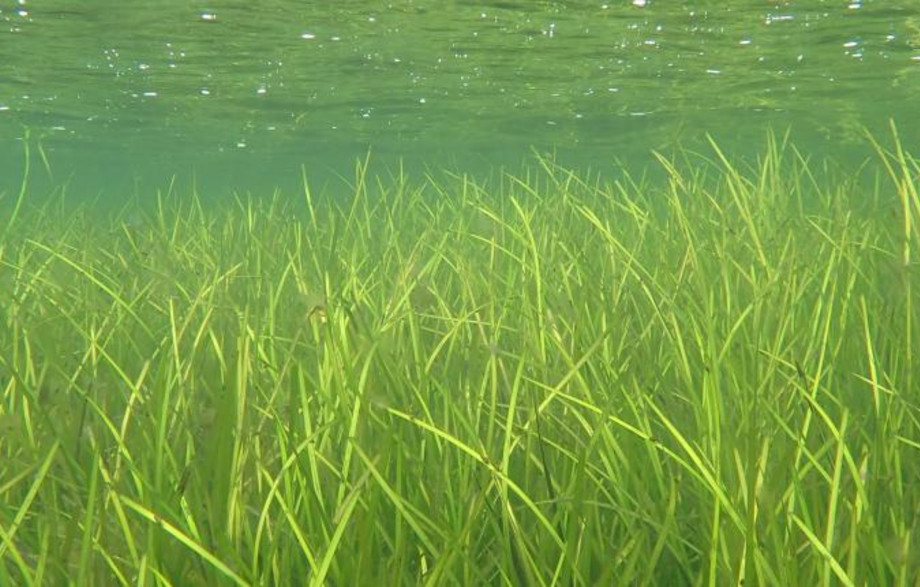Research: A healthier Little Belt thanks to joint efforts

06.09.2022
Nutrient reductions are a condition for improving the environmental conditions in the Little Belt, and focused efforts to create habitats with, for example, eelgrass or stone reefs can increase the quality of the natural environment locally. This is the conclusion of two new reports prepared by researchers for 11 municipalities prior to the ‘Life in the Little Belt’ project.
Oxygen depletion, algal blooms and an absence of cod and flatfish in the Little Belt. Many citizens living around the Little Belt have long been worried about their local marine environment, and the local municipalities have therefore agreed on a joint initiative based on sound knowledge. The title of the project is ‘Life in the Little Belt’.
The 11 municipalities have received funding from VELUX FONDEN for a preliminary project and two reports, which have been prepared by researchers and experts from the Centre for Marine Nature Restoration (Center for Marin Naturgenopretning).
Karen Timmermann, Professor at DTU Aqua and co-author of the reports, says:
“Across the knowledge institutions, we have been allowed to zoom in on the Little Belt and focus both locally and regionally on what the problem is and what we can do. All our data indicate that nutrient pollution from land is the biggest problem for the marine environment and the flora and fauna in the Little Belt. Oxygen depletion and bottom trawling also put significant pressure on the marine environment in the Little Belt, judging by the affected area. However, other anthropogenic factors such as raw material extraction, dumping, coastal protection, invasive species, environmentally hazardous substances, climate change and the stone fishing that used to happen also play a role.”
What can the municipalities do?The question now is what the municipalities around the Little Belt can do to improve the marine environment. The report clearly states that joint efforts are needed. Everyone must stand together to cut nutrient emissions to the marine environment – municipally, nationally and internationally. Moreover, the municipalities around the Little Belt can also launch marine projects at sea to create better conditions for life and biodiversity, thus helping to restore the environment more quickly. This is what the municipalities will be doing under the ‘Life in the Little Belt’ project, for example by planting eelgrass or establishing stone or biogenic reefs. In addition, the report describes measures such as setting up biohuts/fish nurseries, growing mussels and seaweed in the water column, fishing out crabs and starfish, protecting areas against trawling and nature-based solutions for protecting coastal areas from climate change.
Marine nature restoration is comingKaren Timmermann is very pleased with the new collaboration at the Centre for Marine Nature Restoration and with the municipalities and VELUX FONDEN, because marine nature restoration is a relatively new field worldwide, and everyone must work together to learn more.
“We have little experience with active marine nature restoration in Denmark and internationally, but what little experience we do have suggests that it is both possible and beneficial for the marine environment and natural conditions. The effect of the measures depends to a large extent on the local physical and environmental conditions at sea, and not all measures will therefore be suitable for all locations. The descriptions of the measures include requirements for suitable locations, and the task then is to go out and investigate whether the required conditions exist locally.”
The grant for the preliminary project has been given under VELUX FONDEN’s environmental programme, which promotes healthy marine environments that can withstand climate change. Charlotte Mogensen, head of VELUX FONDEN’s environmental programme, says:
“With the results of the reports, we now have important knowledge that can help the municipalities in their planning and with the specific initiatives. The results can also be used by the Danish state for managing the new marine nature park in the Little Belt.”
The municipalities around the Little Belt will now seek funding from external partners, and will then be in a position to decide whether projects involving, for example, new stone reefs and more eelgrass can start.”
The 11 municipalities involved in the ‘Life in the Little Belt’ project are the municipalities of Sønderborg, Aabenraa, Haderslev, Kolding, Fredericia, Vejle, Middelfart, Assens, Faaborg-Midtfyn, Svendborg and Ærø.
Links to the reports (in Danish):
https://www.aqua.dtu.dk/-/media/institutter/aqua/publikationer/rapporter...
https://www.aqua.dtu.dk/-/media/institutter/aqua/publikationer/rapporter...
Contact at the Centre for Marine Nature Restoration:
Karen Timmermann, Professor at DTU Aqua, Section for Coastal Ecology
Tel.: +45 9351 0381, Email: karti@aqua.dtu.dk
Contact for the 11 municipalities:
Hans Ole Hansen, Project Manager, Environment & Nature, Municipality of Assens
Tel.: +45 3057 8824, Email: hohan@assens.dk